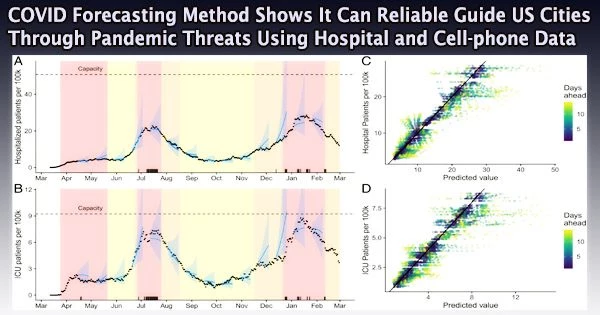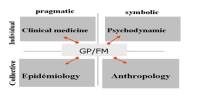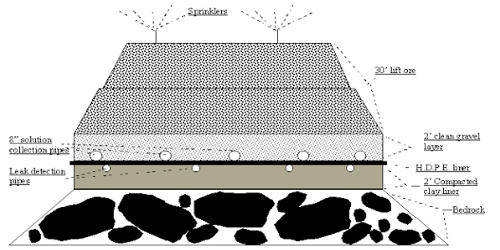According to a recent study published in the Proceedings of the National Academy of Sciences, researchers at The University of Texas at Austin have accurately predicted regional hospital demands for over two years using mobile mobility data and COVID-19 hospital admissions data.
The forecasting system has been developed for use by 22 municipal regions in Texas and may be used by any city to direct COVID-19 reactions as the virus spreads. Municipal authorities credit Austin for maintaining the lowest COVID-19 death rate among all significant Texas cities.
A strong forecasting model and two public-facing dashboards were created by the scientific team working with Austin’s elected officials, public health officials, and health care system executives. These tools helped the city’s leaders manage health care resources, guarantee adequate hospital capacity, and inform the public about pandemic risks.
When the model was created during the early stages of the epidemic, it stood out from other internet forecasts. For instance, the UT model did so long before the well-known Institute for Health Metrics and Evaluation (IHME) model developed by the University of Washington. It also included comprehensive data on public movement and hospital admissions.
In addition, the model offers estimates at the local level rather than the state level, which are crucial for foreseeing and controlling COVID-19 health care spikes. It does this by including comprehensive data on the ages and health risks of locals.
The COVID-19 forecasting dashboards created by the UT COVID-19 Modeling Consortium describe the current and potential dangers of COVID-19 using simple images and spaghetti lines.
The relationship between mobility and COVID-19 transmission was weaker in February 2021 compared to March 2020, suggesting that the community found safer ways to interact in public.
Spencer Fox
Since the spring of 2020, the daily internet forecasts have aided citizens of Austin and local authorities in making decisions that could save lives. The program can be modified to predict the three-week COVID-19 health care needs in any American community. It makes use of SafeGraph’s anonymized smartphone mobility data, which shows how much time people spend at home and how often they go out to places like pubs, restaurants, and schools. These data reflect how behaviors change daily in response to changing COVID-19 conditions.
“Community movement data helps us gauge changing COVID-19 transmission risks and anticipate health care surges several weeks in advance,” said Spencer Fox, corresponding author and associate director of the UT COVID-19 Modeling Consortium.
The scientists also examined how mobility and COVID-19 transmission interacted, and they discovered that protective measures like face masks and social seclusion decreased the likelihood of transmission while persons were out in public.
“The relationship between mobility and COVID-19 transmission was weaker in February 2021 compared to March 2020, suggesting that the community found safer ways to interact in public,” said Fox.
The researchers found a strong correlation between COVID-19 policies and pandemic trends. When behaviors relaxed, the virus picked up speed. When restrictions were enacted to curb surges, they had the desired effect.
For example, Texas’ rapid reopening policy in the spring of 2020 corresponded with a major COVID-19 surge in Austin, which subsided after the implementation of local restrictions and a statewide mask mandate.
“This forecasting system helped save lives by allowing our community to see what they needed to do and when they needed to do it,” said Austin Mayor Steve Adler.
“This tool stands at the intersection of science and public policy and shows the good that can be realized when they are aligned. It was an honor to be part of such a stellar team that developed and applied this system,” said Adler.
A municipal COVID-19 task committee in Austin, which includes scientists, civic leaders, public health officials, and health care CEOs, created the forecasting method.
Throughout the pandemic, the model projections have guided policy decisions and response initiatives, including resource planning by local hospitals, requests for more funding from state and federal agencies, the establishment and deconstruction of alternative care sites to expand the availability of healthcare, and adjustments to the COVID-19 alert stage for the Austin region to better communicate and manage risks.
The model projections have been frequently discussed in public forums and highlighted by news media. Data-driven policies and effective health messaging have helped Austin to keep its COVID-19 death rate the lowest among all large Texas cities.
“Our forecasts have helped the city of Austin make key decisions and communicate risks throughout the COVID-19 pandemic. The city leadership put their trust in science, and the local health care systems worked tirelessly to provide critical data,” said Lauren Ancel Meyers, director of the consortium, a co-author of the study and a professor of integrative biology and statistics and data sciences at UT Austin.
“Together, we were able to build a forecasting system that is easy to interpret and can be used by any city to guide COVID-19 responses as the virus continues to spread in cities throughout the U.S.,” said Meyers.
Co-first authors are Spencer J. Fox of The University of Texas at Austin and Michael Lachmann of Santa Fe Institute. Other authors are Mauricio Tec, Rémy Pasco, Spencer Woody, Tanvi Ingle, Emily Javan, S. Claiborne Johnston, James Scott and Xutong Wang of The University of Texas at Austin; Maytal Dahan and Kelly Gaither of UT Austin’s Texas Advanced Computing Center; Zhanwei Du, previously of Meyers’ lab; The University of Hong Kong; Mark E. Escott of UT Dell Medical School and the City of Austin; and Steve Adler of the City of Austin. Meyers holds the Cooley Centennial Professorship of Integrative Biology and Statistics and Data Sciences at The University of Texas at Austin.
The research was supported by the Centers for Disease Control and Prevention, the National Institutes of Health, and a donation from Tito’s Handmade Vodka. High-performance computing, visualization, database, and grid resources were given by the Texas Advanced Computing Center at The University of Texas at Austin, and these tools helped to produce the research findings that were reported.
















